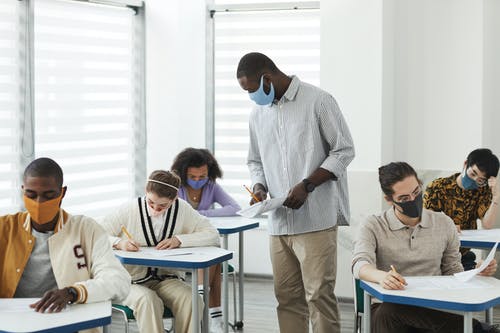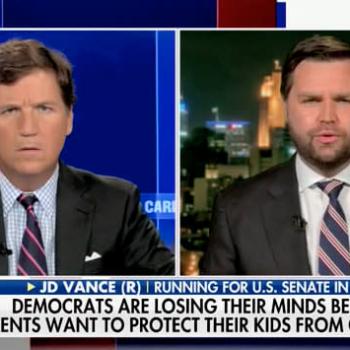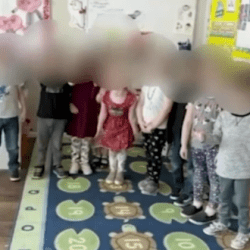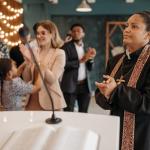
Like the world in general, the education landscape has been anything normal in the past year. As the pandemic began to spread early last spring, schools had to scramble to find a way to continue the learning process remotely. To be completely honest, the end of the 2019-20 school year was pretty messy. Few school districts, administrators, or teachers had much, if any, experience conducting school through an e-learning model. We did the best we could on the fly, but it was far from ideal. But we were told that the safety of students and staffs was the paramount concern. The start of 2020-21 school year saw the pandemic get much worse, yet most schools got back to some form of in-person learning. As the second semester of this school year has gotten underway, many schools have transitioned all the way back to a normal, full schedule. This move has many teachers wondering how much they are truly valued.
This school year started out with a great deal of caution. Strict safety protocols were put in place–how well they were followed, by all accounts, varies widely from school to school–with sanitation stations mounted throughout the buildings, frequent disinfecting wipe-downs of desks, chairs, door handles, etc., mask mandates, six-foot social distancing requirements, 14-day quarantines for sick students and staff, and contact tracing. Most schools I am aware of offered families the option of full-time remote learning or taking part in a hybrid schedule where only half of the students would come to school at a time–group A would attend on Mondays and Thursdays, group B would attend Tuesdays and Fridays, while Wednesdays were virtual lessons as teachers used the day to prepare more lessons in this strange new reality. This, or some similar variant, became the norm in many school districts for most of the first half of the school year. While this model came with a lot of extra work and challenges for teachers, it had some wonderful side-benefits as well. With many students choosing the full-time remote path and the rest divided in half, many teachers finally got to experience what it is like to have small class sizes and found that it does indeed make a world of difference when it comes to behaviors. Every teacher I’ve talked to has reported that discipline referrals all but disappeared for the whole first semester.
There was always the possibility that at some point, the hybrid model would go away, and we would return to a full five-day-a-week schedule with all students. But whenever that was mentioned, it was always with the understanding that it would happen only after vaccines were made available. Teachers were labeled as essential front line workers and were assured that they would be near the front of the line when the vaccines came. So teachers made the best of a less than ideal situation and did our best to make the unusual feel normal as they waited.
And then the vaccines came! As news continued to come in about how positivity rates were going through the roof and how the virus was mutating and developing into even scarier strains, at least teachers had the hope that they would be vaccinated soon. In most of the places I am aware of, teachers are still waiting to be vaccinated even as many of the Covid restrictions have been removed.
In the state of Indiana, schools have been cleared to return to full schedules even though the positivity rate thresholds that were enforced earlier in the year have been surpassed for months. Those thresholds seem to have vanished. The social distancing protocol has been reduced from six feet down to three. The quarantine times have been cut in half from 14 days down to 7. And contact tracing has been all but eliminated. Indiana governor Eric Holcomb assures everyone that these are reasonable moves. Teachers are told that students tend not to be among the major spreaders of the virus. Let’s assume all that is true, there are still thousands of teachers who are high-risk individuals facing a lot of risk when they are in crowded classrooms and most of those folks are still waiting on the promised vaccine. To many teachers, it feels like the return to full-time in person school is putting the cart before the horse–or putting the politics of economics in front of public safety.
There seems to be some public perception out there that teachers griping–and in some cases, like Chicago, walking out–over this push to return schools to normal is evidence that we don’t want to teach–that we are whiny, soft, lazy, snowflakes. I can assure you that I don’t know any teachers like that. Being back to full time school for this short time has revealed that it is the best model for everyone involved and it’s actually much easier on teachers than the hybrid or e-learning model–this is what we were trained for and what we love to do. Trying to engage students through WebEx or Zoom meetings was often a nightmare, frankly. But this move is only truly best if it is the right time and it doesn’t unnecessarily put staff or students in harm’s way.
The bottom line is, teachers were told they were valued, labeled as essential, and moved near the front of the line for vaccines and now they’ve changed the game without considering teachers…again. Teachers aren’t any whinier than any other profession, we are just routinely overlooked by politicians more than most. Teachers have a long history of being taken advantage of by our statements governments–being told how vital and appreciated we are and how our voices matter all while being treated like expendable commodities–being given empty promises–being asked for more and given less. That tends to grind on people over time. It has driven countless teachers out of the profession, and it has caused millions to reconsider going into the profession. The teacher shortage is getting worse–and will continue to get worse–and our politicians don’t seem to care.
They may say they care–they may say they listen–but their actions speak much louder than words.
Give teachers their vaccines!















